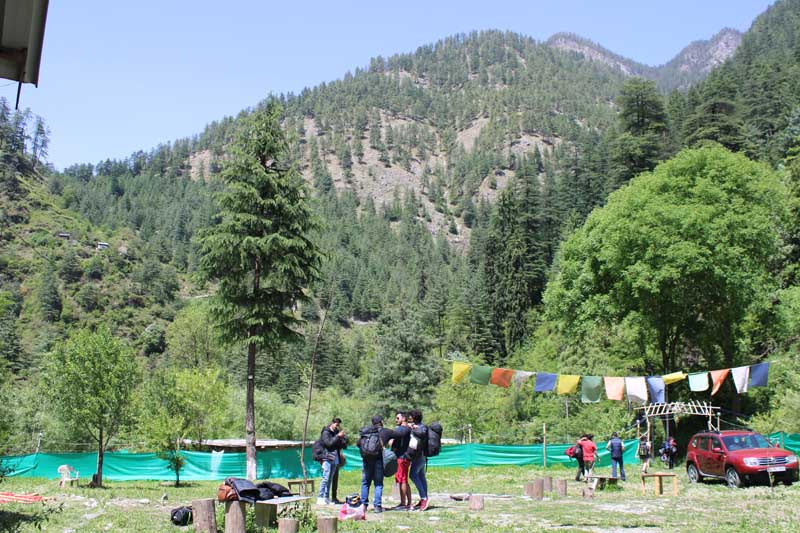Great Himalayan National Park, H.P. having area of 754 sqkm. Height ranging from 2000 meters to 5800 mtrs. It is land of glaciers and steppes and virtual heaven for trekkers. It is bordered by high Himalayan peaks on eastern parts and snow covered area on its northern and southern parts. A considerable portion of the park specially the eastern park remains covered with snow throughout the year.
Great Himalayan National Park
The Great Himalayan National Park (GHNP), is one of India's national parks, is located in Kullu region in the state of Himachal Pradesh.
The park was established in 1984 and is spread over an area of 1,171 km2 at an altitude of between 1500 and 6000 m. The Great Himalayan National Park is a habitat to numerous flora and more than 375 fauna species, including approximately 31 mammals, 181 birds, 3 reptiles, 9 amphibians, 11 annelids, 17 mollusks and 127 insects. They are protected under the strict guidelines of the Wildlife Protection Act of 1972; hence any sort of hunting is not permitted.
In June 2014, the Great Himalayan National Park was added to the UNESCO list of World Heritage Sites.[1]The Unesco World Heritage Site Committee granted the status to the park under the criteria of "outstanding significance for biodiversity conservation"
Biogeography
The GHNP is at the junction of world's two major faunal regions: the oriental to the south and palaearctic to the north. The temperate forest flora-fauna of GHNP represents the western most extension of the Sino-Japanese Region. The high altitude ecosystem of the Northwest Himalaya has common plant elements with the adjacent Western and Central Asiatic region. As a result of its 4,100 m elevation range the park has a diversity of zones with their representative flora and fauna, such as alpine, glacial, temperate, and sub tropical forests.
Fauna

Flora
 The GHNP also supports a great diversity of plant life thanks to its wide altitude range and relatively undisturbed habitats. From the lofty pinesand spruces and the great, spreading horse chestnuts of the lower valleys, to the dense cushions and prostrate branches of the alpine herbs and junipers, the park presents an endless variety of vegetation. Although some areas have been modified by grazing, this is one of the few areas of the Western Himalayas where the forests and alpine meadows can be seen in something approaching their original state. The subalpine zone is richest in species, followed by the alpine and upper temperate zones.
The GHNP also supports a great diversity of plant life thanks to its wide altitude range and relatively undisturbed habitats. From the lofty pinesand spruces and the great, spreading horse chestnuts of the lower valleys, to the dense cushions and prostrate branches of the alpine herbs and junipers, the park presents an endless variety of vegetation. Although some areas have been modified by grazing, this is one of the few areas of the Western Himalayas where the forests and alpine meadows can be seen in something approaching their original state. The subalpine zone is richest in species, followed by the alpine and upper temperate zones.




